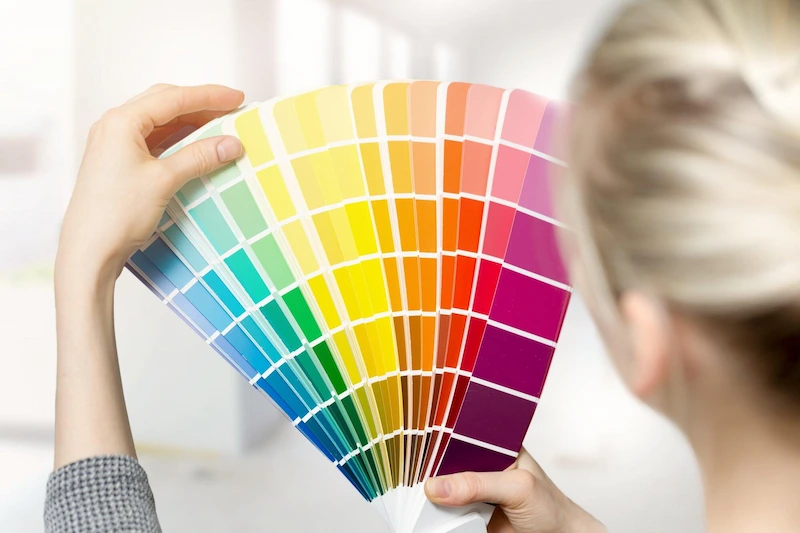Color is the silent storyteller of the web. It speaks volumes without saying a word. From evoking emotion to directing attention, color wields immense power in the design of a website.
Color creates the atmosphere, conveys brand messages, and even influences user behavior. But harnessing color is an art form that marries beauty with functionality.
In this extensive exploration of color in web design, we’ll dissect the impact of color on user experience. We will discuss the principles of aesthetic color choices and provide actionable insights to help you wield the palette with prowess.
Understanding this elemental aspect of design is crucial to crafting compelling digital experiences. So, read on!
Understand Color Psychology
Color psychology is the study of how color influences human behavior, emotions, and perceptions. This field explores the psychological and physiological impacts of different colors on people.
Different colors have distinct effects on our moods and behaviors. Take red, for example—it can stir up feelings of passion or anger. On the other hand, blue is often linked with serenity and trust.
Understanding color psychology is crucial to using color in web design. By making intentional color choices, designers can create specific emotional responses and guide user behavior.
Establish a Color Palette
Before diving into color selection, it’s important to establish a color palette for your website. A color palette is a set of colors that work together and represent the brand’s identity.
Creating cohesive color palettes allows designers to maintain consistency throughout their websites. Plus, it can help create a strong visual impact. A carefully selected color palette can elevate the user’s overall experience. This is achieved by providing an easy-to-navigate color scheme.
There are numerous methods for selecting a color palette that suits your needs. This includes using complementary colors or monochromatic shades. It’s essential to consider the brand’s personality and the emotions you want to evoke in users when selecting colors for your palette.
Consider Brand Identity
Color serves as a potent means of expressing brand identity. Each color has its associations and meanings. This makes it crucial to choose colors that align with the brand’s personality and values.
For example, green often represents nature and sustainability. This makes it particularly fitting for environmentally conscious brands. Black is associated with luxury and sophistication. This makes it suitable for high-end brands.
By understanding the brand’s identity and values, designers can use color. This can help create a consistent and impactful brand image on their website. This helps users form strong associations with the brand and builds trust and loyalty.
Professional designers from sites like https://www.intoclicks.com/tucson-web-design/ would agree that color plays a significant role in establishing brand identity. This means that color can leave a lasting impression on users.
Create Visual Hierarchy
In web design, color can also be used to create a visual hierarchy. This refers to the organization and prioritization of content based on its importance.
By using bold or contrasting colors for important elements, designers can guide users’ attention. They can convey the significance of certain information. This not only enhances user experience. It also improves website functionality.
When creating a visual hierarchy with color, it’s important to consider the layout and design of the website. The color choices should complement and enhance the other design elements. This should be implemented rather than competing with them.
Balance Contrast and Harmony
Finding the right balance between contrast and harmony is key to using color effectively in web design. Contrast delineates the distinction between lighter and darker hues. Harmony involves using complementary or analogous colors.
Too much contrast can be overwhelming and cause eye fatigue. Too much harmony may result in a boring or monotonous design. Designers should aim for a balance that creates visual interest. It should guide the user’s eye without causing strain.
Moreover, contrast and harmony can be used strategically to highlight important elements. It can create depth and dimension and improve legibility. This helps enhance the overall user experience and makes for a visually appealing website.
Use White Space
White space, also known as negative space, is crucial in web design. It refers to the space around and between design elements.
By using white space effectively, web designers can create a clean and organized layout. It allows the colors to stand out and have maximum impact. This also improves readability and reduces visual clutter for a more enjoyable browsing experience.
When using color, it’s important to consider the white space around it. Make sure that there is enough breathing room for each element. This helps maintain balance and prevent a chaotic design.
Implement Color Blocking
Color blocking, a widely-used design tactic, employs large color sections to craft visually impactful layouts. This approach can be used to add:
- depth
- contrast
- visual interest
Designers can use different colors or shades to create bold and dynamic layouts that capture the user’s attention. Color blocking also allows designers to highlight specific elements and guide the user’s eye to important information.
When implementing color blocking, it’s important to consider the overall design and layout of the website. The colors should complement each other and work together to create a cohesive visual aesthetic.
Experiment with Gradients
Gradients involve blending two or more colors. Designers can use gradients in various ways. This can span from background elements to buttons and text overlays.
Gradients also offer the opportunity to incorporate many colors into a design. This can be made possible without creating a cluttered or overwhelming effect.
When using gradients, it’s important to consider the colors being used and ensure they work well together. Careful experimentation can lead to stunning and unique designs that make a lasting impact on users.
Optimize for Accessibility
It’s essential to consider color accessibility when designing a website. This involves ensuring that the colors used are inclusive. They must be distinguishable for people with visual impairments.
Designers have access to tools like color contrast checkers to aid in their work. That way, they can ensure that there is enough contrast between different elements for maximum readability. Using alternative text for images and icons also helps make the website more accessible for all users.
Stay Updated with Trends
As with any design element, color trends are constantly evolving. Designers need to stay updated with current color trends. They must then incorporate them into their designs.
However, it’s also crucial to not blindly follow trends. Instead, consider the brand’s identity and the overall design of the website. Trends can serve as inspiration. But ultimately, purposeful and intentional color choices will have a stronger impact on the user experience.
In addition, staying updated with color trends can help designers create unique and innovative designs. This can help a website stand out from the crowd. This allows for creativity and experimentation while also staying relevant in the ever-changing world of web design.
Consider Cultural Significance
When designing for a global audience, it’s important to consider the cultural significance of different colors. Colors may convey diverse meanings and associations across different cultures. So, they may affect how users perceive the website.
Designers should research the cultural implications of color choices. They can ensure that they align with the intended message of the brand. This helps avoid potential misunderstandings or negative connotations associated with certain colors.
By considering cultural significance, designers can create a more inclusive and culturally sensitive website. Such a website resonates with users from diverse backgrounds.
Test and Iterate
It’s crucial to test and iterate on color choices throughout the design process. This allows designers to see how colors work together and make any necessary adjustments before finalizing the website.
Designers can also gather feedback from users. That way, they can understand how they perceive the colors and whether they evoke the intended emotional responses. This helps refine color choices and create a more impactful and effective design.
By continuously testing and iterating, designers can ensure that the final product successfully utilizes color to enhance the user experience and achieve the desired goals for the website.
Embrace Minimalism
In recent years, minimalism has become a popular trend in web design. This approach involves using a limited color palette and clean design to create a simple yet impactful website.
Embracing minimalism can be a useful tool for designers when working with color. Designers can focus on creating a cohesive and visually appealing design that doesn’t overwhelm the user. This can be achieved by limiting the number of colors used.
Minimalism also allows designers to use color intentionally and strategically. It guides the user’s eye and creates a strong visual hierarchy. This creates a clean and elegant website that is both aesthetically pleasing and functional.
You may like – Modern Living Room Furniture on a Budget: Tips and Tricks for Affordable Style
Learn to Implement Aesthetic Color in Web Design
Color plays a crucial role in web design. By understanding color following these tips, designers can effectively use color to enhance the overall user experience.
It’s also important to stay updated with color trends and consider cultural significance. Make sure to continuously test and iterate. That way, you can create a visually striking and user-friendly website.
By mastering the art of using aesthetic color in web design, designers can create websites that not only look visually stunning. They also effectively communicate the brand’s message and provide an enjoyable browsing experience for users.
If you’re interested in delving deeper, feel free to explore our blog for more insights. We’ve got more topics!






